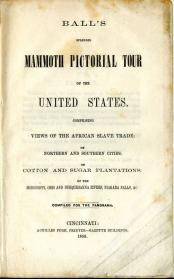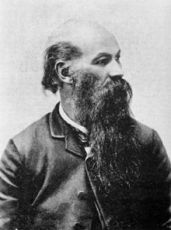James Presley Ball (1825-1904) was a prominent African American photographer, abolitionist, and businessman. He was born in 1825 to William and Susan Ball, who were listed as free people of color in Virginia.
Ball learned daguerreotype photography from John B. Bailey of Boston, who was also a “free man of color”. Daguerreotype photography was invented in 1839 and marked a milestone in photographic history as people could now easily carry around a portrait of their loved one. Today, most photographs are made from images printed to paper from transparent negatives. The daguerreotype was a polished copper plate upon which an image was directly exposed. Since no negative was used in the process, each daguerreotype was one of a kind. Each photograph had a mirror-like surface, ornate case, and was small enough to hold in the hand or carry in a pocket. It is no wonder the daguerreotype was primarily used for portraits and became immensely popular through the 1850’s.
Ball had opened a one room daguerreotype studio in Cincinnati in 1845, but business was sluggish, so he closed the gallery and became a travelling photographer. He settled briefly in Pittsburgh, Pennsylvania, then in Richmond, Virginia, before returning to Cincinnati in 1849.
Ball opened another daguerreotype studio in downtown Cincinnati in 1851. Two years later, he moved the studio to a larger location at 30 W. Fourth Street and hired 9 employees. The gallery was known as “Ball’s Great Daguerrian Gallery of the West” and became one of the notable photography galleries of the United States.
Due to the studio’s success, Ball opened a second gallery in downtown Cincinnati at 120 W. Fourth Street with his brother in law, Alexander Thomas. The Ball & Thomas gallery also prospered and soon became known as the finest photographic gallery west of the Allegheny Mountains. 
In 1855, Ball published one of his most significant works – an abolitionist pamphlet accompanied by a 600 yard long panoramic painting titled “Mammoth Pictorial Tour of the United States Comprising Views of the African Slave Trade; of Northern and Southern Cities; of Cotton and Sugar Plantations; of the Mississippi, Ohio and Susquehanna Rivers, Niagara Falls & C.”
Ball ended his partnership with Alexander Thomas in 1860, but the Ball & Thomas gallery remained as Thomas C. Ball, J.P. Ball’s younger brother, continued the studio until the death of Alexander Thomas in 1875.
Ball began to have financial difficulties around 1865 and ultimately left Cincinnati in 1871. Before he left Ball gave his son an interest in his gallery and the name was changed to Ball & Son.
During his career, J.P. Ball became known as an accomplished photographer and had the opportunity to photograph a wide mix of people. Some of the more notable subjects include P.T. Barnum, Frederick Douglas, Charles Dickens, Jenny Lind, the family of Ulysses S. Grant, and Queen Victoria of England. Ball also captured a country in transition as he photographed common pioneers, slaves, soldiers, and immigrants. His works were featured in exhibitions at the Ohio Mechanics Institute expositions held in 1852, 1854, 1855, and 1857. He also won the bronze medal for photography at the 1857 exposition.
A sampling of Ball’s portraits can be viewed at the Cincinnati History Library and Archives.
